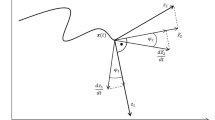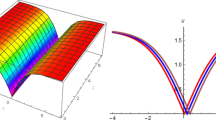We investigate the subject domain of the analytic analysis of military confrontations (regarded as a constitutive part of military security) in the course of low-intensity conflict described by nonlinear Lanchester equations. The precondition of choosing a model of this type is explained by a slow decrease in the fraction of preserved forces (the parties of conflict act cautiously) and the fact that the conflict process is characterized by the protracted and slow development of the situation and lasts for an “infinitely” long time, which is not described by the linear class of the model. The analytic analysis is carried out in two directions. In the first of these directions, it is necessary to establish the formulas that describe the relationship between the initial ratio of forces and the specified criteria. The required expression is obtained in the form of a quadratic dependence unlike the previously deduced biquadratic dependence for nonlinear systems used to describe the intense type of action. The second direction deals with the analytic evaluation of the time required to attain the ultimate goal of one of the parties of conflict in which the original system is reduced, by a special transformation, to a single nonlinear differential equation of the first order, which is solvable with respect to the time parameter with the help of tabular integrals. All analytic statements are confirmed by numerical examples. The results of numerical integration of the nonlinear system of differential equations chosen for the analysis are also presented.
Similar content being viewed by others
References
V. Kotlyarov and O. Kuznetsov, “Optimal distribution of resources according to the minimax principle in a conflict situation described by a nonlinear dynamical system,” The Scientific Heritage, No. 57, 27–31 (2020); DOI: https://doi.org/10.24412/9215-0365-2020-57-4-27-31.
P. M. Morse and G. E. Kimball, Methods of Operations Research, Chapman & Hall, London (1951).
E. Ventsel’, Investigation of Operations [in Russian], Sovetskoe Radio, Moscow (1972).
B. Gorevich, “Development of a method of antiaircraft defense of an object based of the complex use of various mathematical models of battle actions,” Voen. Mysl’, Moscow, No. 9, 60–66 (2008).
V. S. Brezgin and A. I. Buravlev, “Equation of dynamics of the battle potentials of conflicting groups,” Élektron. Nauch. Zh., “Vooruzhenie i Ékonomika,” 13, No. 1, 59–65 (2011); http://www.mil.ru/info/1070/51205/index.shtml.
I. Romanchenko, V. Kotlyarov, and O. Pavlyuk, “Determination of the analytic dependence for the initial ratio of forces of the parties with regard for criteria restrictions,” Suchas. Inform. Tekhnol. Sfer. Bezpek. Obor., 33, No 3, 139–142 (2018).
I. Bronshtein, A Handbook on Mathematics for Engineers and Students of Higher Technical Schools [in Russian], Nauka, Moscow (1981).
H. B. Dwight, Tables of Integrals and Other Mathematical Data, Macmillan Company, New York (1961).
Author information
Authors and Affiliations
Corresponding author
Additional information
Translated from Neliniini Kolyvannya, Vol. 25, No. 1, pp. 41–48, January–March, 2022.
Rights and permissions
Springer Nature or its licensor (e.g. a society or other partner) holds exclusive rights to this article under a publishing agreement with the author(s) or other rightsholder(s); author self-archiving of the accepted manuscript version of this article is solely governed by the terms of such publishing agreement and applicable law.
About this article
Cite this article
Kotlyarov, V.P., Zvarych, A.O. & Kuznetsov, O.A. On the Lanchester Model of Low-Intensity Conflict. J Math Sci 274, 43–49 (2023). https://doi.org/10.1007/s10958-023-06569-w
Received:
Revised:
Published:
Issue Date:
DOI: https://doi.org/10.1007/s10958-023-06569-w




